Australia claimed their fifth World Cup title as they beat New Zealand by seven wickets in front of a record MCG crowd on Sunday. Michael Clarke’s side were deserving winners of a tournament which has seen plenty of amazing performances with the bat, ball and in the field.Although the final came to an anti-climatic end, this year’s edition has been filled with plenty of memorable moments, thanks to some world-class players. How many of the triumphant Aussie side make it into the team of the tournament? Do the Kiwis have any consolation? Is there any room for an Indian? To find out, simply read on.NOTE: (i) The opinions stated in this article are those of the writer and not of the website as a whole.(ii) This is NOT the official ICC Team of the Tournament.
#1 Martin Guptill
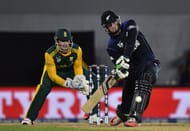
Runs: 547, Average: 68.4, Strike Rate: 104.5
After a slow start to the tournament, Martin Guptill has fully repaid the faith shown in him by the selectors. He was not only the leading run scorer, but also became the first Kiwi to score over 500 runs in a single tournament, apart from also holding the record for the highest World Cup score.
After an important 105 in a crucial run chase against Bangladesh, the 28-year-old opened the floodgates against the West Indies in the quarter-final as he scored an unbeaten 237 not out. That innings was a mixture of power and placement and showed that he is more than capable of leading the line.
Although McCullum has provided the fast starts, it is Guptill who has consolidated that and helped his side to their first-ever World Cup final.
#2 Brendon McCullum (captain)
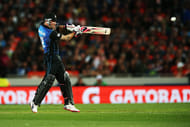
Runs: 328, Average: 36.4, Strike Rate: 188.5
After providing New Zealand with fast starts throughout the tournament, McCullum faltered at the final hurdle. But that should take nothing away from his performances over the last six weeks, which has seen him exhibit his status of being one of the most explosive openers in the world and the most attacking captain right now.
From the first ball to the last, he has been positive, whether it was with the bat or with the captain’s decisions. His strike rate of almost 190 and four fifties from nine matches shows that he has been brutal, and also extremely effective.
The 33-year-old's positive mindset helped his country to their first-ever World Cup final appearance. Although neither he, nor his team were able to cap off a wonderful tournament, they certainly showed the world that positive cricket is the way forward.
#3 Kumar Sangakkara
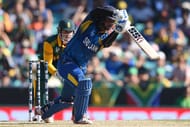
Runs: 541, Average: 108.2, Strike Rate: 105.9
Such is the competitiveness in cricket, it is seldom possible for anyone to bow out on the top of their game. Very few have managed to do it and Sangakkara joined that elite list as he retired from ODIs after the World Cup.
His four consecutive centuries against Bangladesh, England, Australia and Scotland ensured that he went into the record books in his final swansong. Only Guptill, who had played two more matches, had managed more boundaries and runs than the southpaw from Sri Lanka.
Elegant and effective, the left-hander showed that there is more than one way to score quick runs. With their all-time leading run scorer gone, Sri Lanka's rebuilding job has only got harder.
#4 Steven Smith
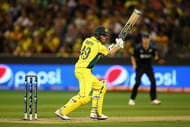
Runs: 402, Average: 67, Strike Rate: 91.6
They say form is temporary. But with his performances over the last few months, Steven Smith has proven otherwise. From being a leg spinner, who struggled to make the side, the 25-year-old's transformation into the batting lynchpin, their leading run scorer in the tournament and future Australian captain has been simply stunning.
After becoming the first Australian to score a World Cup semi-final hundred, he became the first to score five consecutive fifties in the World Cup with his match-winning innings in the final.
Although his batting style is slightly unorthodox, it is incredibly effective. His ability to rotate the strike and always stay busy in the crease has made him one of the most difficult batsmen to bowl to.
#5 AB de Villiers
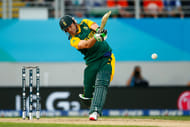
Runs: 482, Average: 96.4, Strike Rate: 144.3
South Africa might have gone back home empty handed but they are incredibly lucky to have the most destructive batsman in the world playing for them. AB de Villiers came into the World Cup having scored the fastest century in ODI history against West Indies. And just when you thought, he couldn't top that, he smashed the fastest ODI 150 from just 64 deliveries against the same opposition.
He went on to score three more fifties against Pakistan, the UAE and New Zealand and finished as the third highest run scorer in the tournament. Although he was the epitome of energy in the field and led from the front, his missed run out cost his side the semi final and he will be looking to atone for that as soon as possible.
#6 Glenn Maxwell
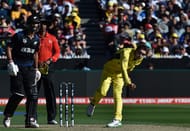
Runs: 324, Average: 64.8, Strike Rate: 182, Wickets: 6
If there was one player who could compete with de Villiers in terms of innovation and creativity, it is Glenn Maxwell. Although he always has had the talent to score quickly, he never quite made the most of it. But this tournament might just be the turning point in his career as Maxwell, the batsman, came of age.
While his strike rate of over 180 is impressive, what will please his fans and coach more, is his average of 64.8 which is almost double his career average. He scored two fifties and also smashed the second fastest World Cup century off just 51 balls against Sri Lanka.
He also picked up six wickets with his part-time off-spin and allowed his side to play without a frontline spinner. The 2015 tournament was when The 'Big Show' finally lived up to his promise.
#7 Corey Anderson
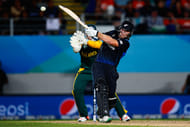
Runs: 231, Average: 33, Strike Rate: 108.4, Wickets: 14
Much of the praise throughout the tournament has been showered on the two openers and fast bowlers among the Kiwis. Some even praised Daniel Vettori in his final tournament and Grant Elliott's exploits against South Africa even warranted some attention. But almost creeping under the radar, has been the tournament's best all-rounder.
Whether it is picking up crucial wickets in the middle overs, stopping the flow of runs towards the end with the ball, providing a final flourish with the bat, Corey Anderson has done everything that has been asked of him and much more. Still only 24, the all-rounder from Christchurch certainly has a bright future ahead of him.
#8 Ravichandran Ashwin
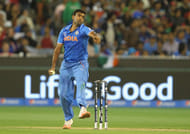
Wickets: 13, Average: 25.4, Economy Rate: 4.3
If India had to have a good World Cup, they needed their front-line spinner to perform. But Ravichandran Ashwin's previous performances outside the subcontinent didn't fill you with particular confidence.
But in this tournament, Ashwin looked a man transformed, as he bowled with great confidence and composure. He stuck to his guns, bowled slower through the air and was looking to take wickets at all times.
His ability to squeeze the life out of the batsmen in the middle overs was a major reason why India were able to bowl out every opposition until the semi final. And he takes his place in this side just ahead of Daniel Vettori as the premier spinner.
#9 Mitchell Starc
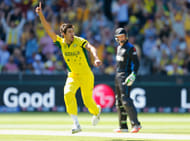
Wickets: 22, Average: 10.2, Economy Rate: 3.5
The architect of Australia's fifth World Cup title and the Man of the Tournament was the one-man wrecking ball that was Mitchell Starc. Although he and Boult finished with the same number of wickets, Starc's average and economy rate was proof that he was undoubtedly the best bowler of the tournament.
Whether it was swinging the new ball and taking early wickets, or bowling inswinging yorkers and bouncers in the death overs and continuing to take wickets, the 25-year-old was a revelation.
Starc picked up at least two wickets in every game and what makes his achievements all the more incredible is the lack of support he had from the other Aussie bowlers, who struggled for consistency.
#10 Trent Boult
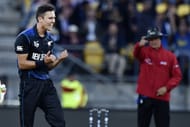
Wickets: 22, Average: 16.9, Economy Rate: 4.4
From seldom featuring in the ODI squad to being the side's player of the tournament, the last six weeks have certainly been one of the best in Trent Boult's relatively short international career.
His haul of 22 wickets have simply underlined his status as one of the most promising bowlers in international cricket in present times. Although Tim Southee started the tournament well, it has been the left-arm pacer who has been spearheading the New Zealand attack in effect.
His record of 14 maidens, which is twice as many as what anyone else in the World Cup managed, is further proof that he has been simply unplayable in this tournament.
#11 Morne Morkel
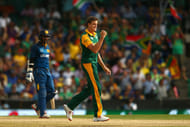
Wickets: 17, Average: 17.6, Economy Rate: 4.4
Only three bowlers managed to take more wickets than Morne Morkel's 17. And one of them wasn't Dale Steyn. It is a mark of how far Morkel has come that he is now arguably the spearhead of the Proteas bowling attack – in effect.
Over the last 12 months, only Starc has taken more wickets than the 30-year-old fast bowler, who gave it his all in this tournament. Every time his captain needed a wicket, he turned to his big fast bowler, who did not disappoint.
Even in the semi-final loss to the Kiwis, Morkel picked up three wickets and it was Steyn who conceded the winning runs in the end.
Brand-new app in a brand-new avatar! Download CricRocket for fast cricket scores, rocket flicks, super notifications and much more! 🚀☄️
